Sailors offered bronze tridents, anchors, amphorae, and small animal figurines to Poseidon, hoping for calm seas or expressing thanks for safe passage. Inscriptions often named ships, captains, or destinations, while rituals likely included libations, sacrifices, and prayers before long voyages. The site is also tied to the myth of King Aegeus, who leapt into the sea from these cliffs, giving the Aegean Sea its name.
Significance of Temple of Poseidon
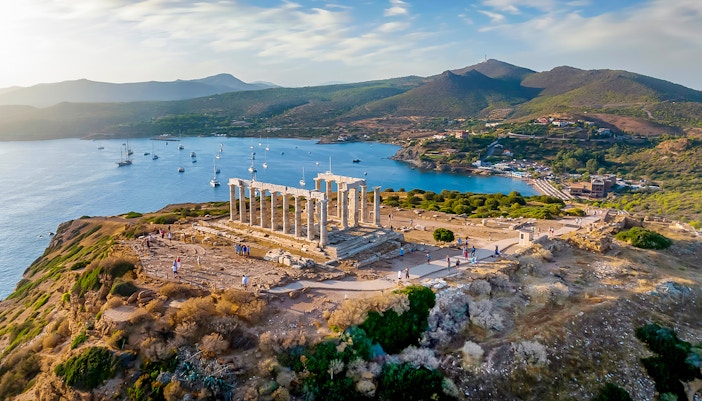
Inscriptions, myths, and maritime rituals
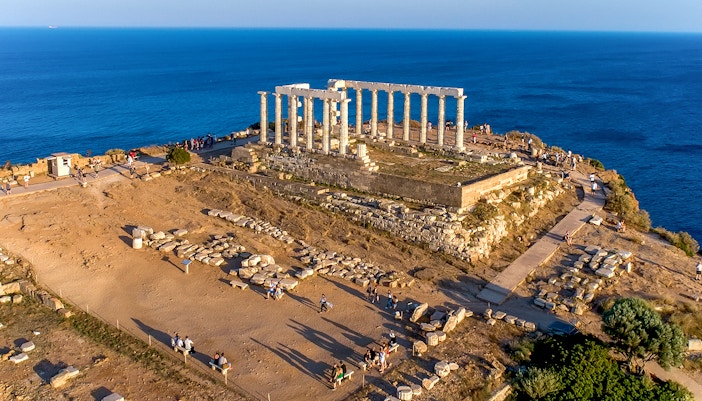
Cape Sounion’s strategic role in ancient defense
Sounion guarded the southern entry to Athens’ main grain supply route. During the Peloponnesian War, fortifications were built near the temple to house soldiers and monitor sea traffic. The position allowed Athens to control movements around the cape, giving the sanctuary both religious and military significance during times of conflict.
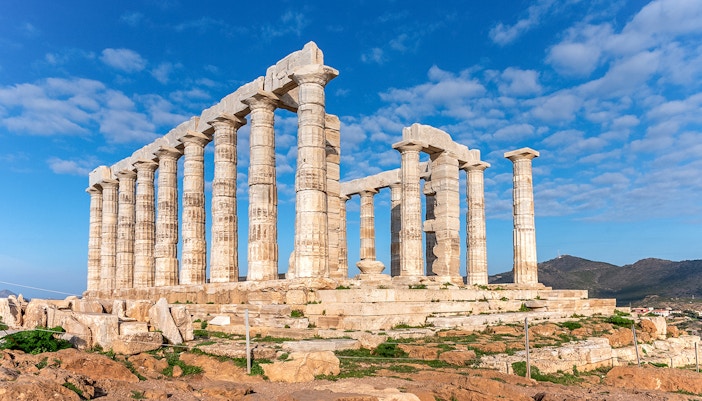
The Temple in literature and art
Classical writers like Thucydides and Euripides referenced Sounion in the context of sea voyages and wartime strategy. In modern times, artists and poets—most notably Lord Byron—were inspired by its cliffside ruins. His 1810 visit and the verse it inspired brought the temple renewed fame during the Romantic period.
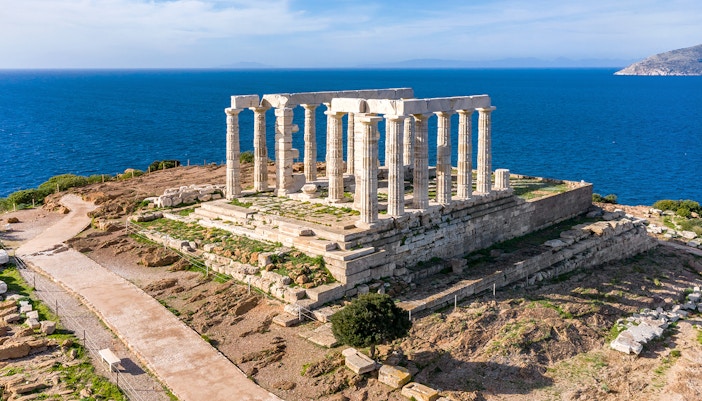
The Temple as a navigational landmark
The temple’s position on a high promontory made it a vital visual marker for ancient sailors approaching Attica. Its white marble columns were visible from far at sea, often serving as a confirmation that ships were nearing home or friendly waters. Pilots used it as a reference point when charting coastal routes.
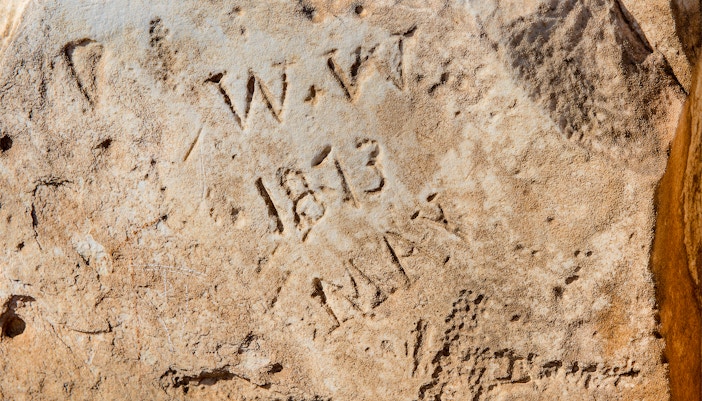
Graffiti through the Ages
Beyond Byron’s well-known signature, the columns preserve names and initials of other 18th and 19th-century travelers. Some scratched dates or short messages into the marble, offering a rare informal record of who visited before modern tourism began. These marks, though now discouraged, form a layered timeline of post-antique engagement with the site.
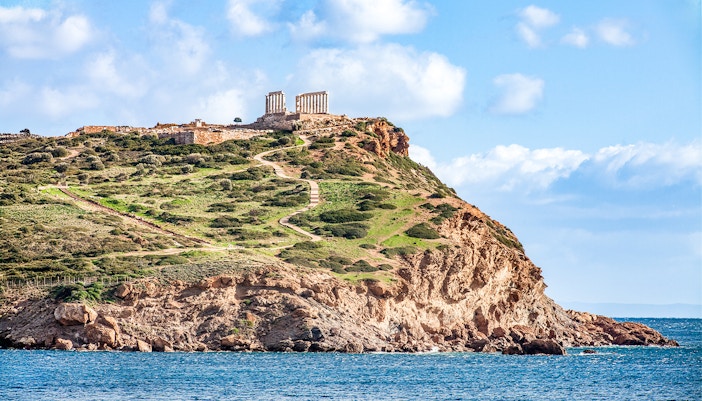
Sacred geography and alignment
The temple was deliberately placed at the tip of the cape, facing the Aegean Sea. Its orientation aligns closely with the route to Delos, a major religious center. This positioning wasn’t accidental—it visually and spiritually linked Poseidon’s sanctuary with wider maritime networks and placed the god’s presence firmly at the edge of the known world.
